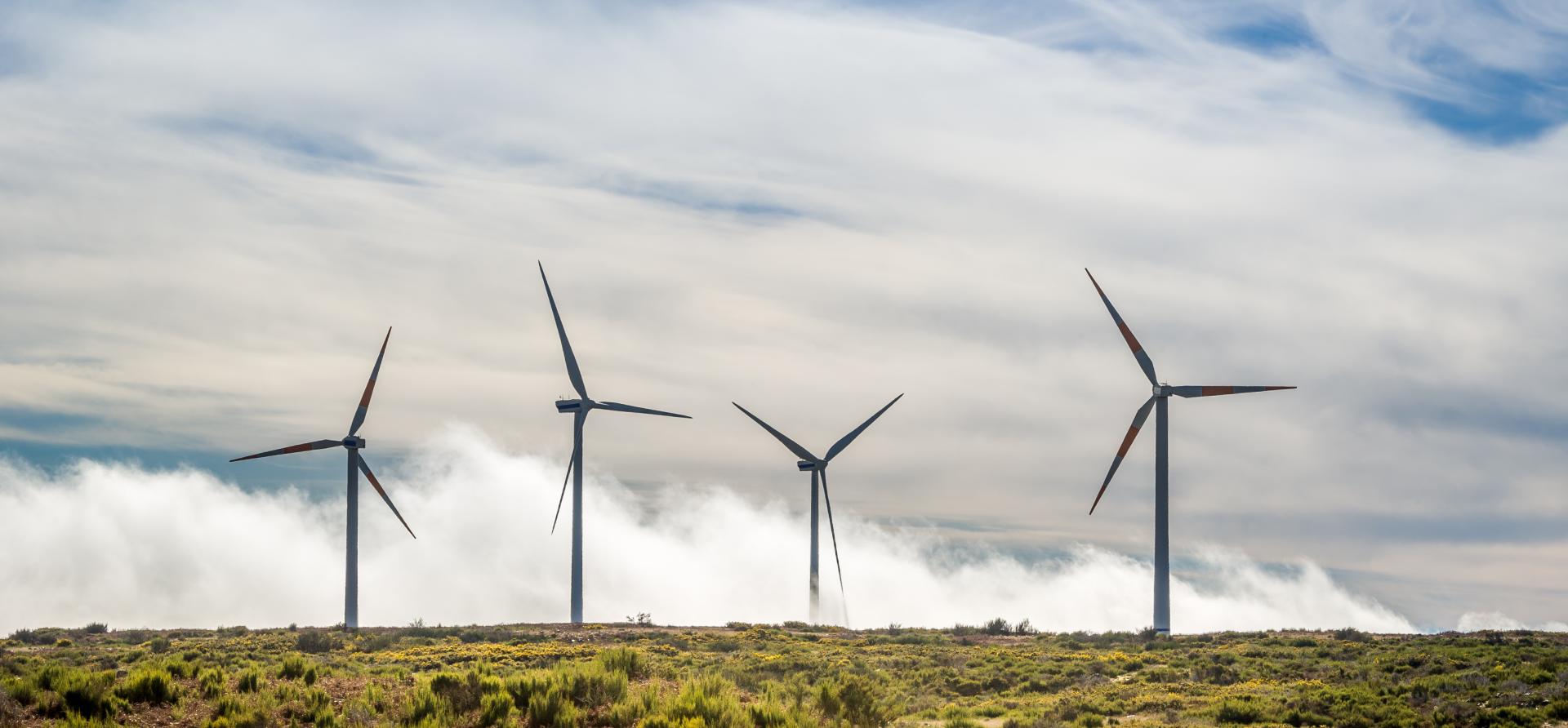Portugal needs more wind capacity to replace rising Spanish electricity imports

Key Findings
Portugal achieved a major milestone in its energy transition by phasing out coal in 2021. It now plans to end gas generation by 2040.
Since 2017, Portugal’s renewable power generation has increased by 57% and its gas demand has declined by 30%.
The government and electricity companies must accelerate wind deployment to achieve the country’s 2030 target of having a 51% share of renewables in final energy consumption.
The growth in renewable capacity is not sufficient to meet electricity demand: Power imports from Spain have done more to fill the void left by falling fossil generation than domestic renewables.
Portugal has made significant progress in its energy transition, focusing on increasing renewables generation and reducing carbon emissions. The country has set an ambitious goal to become carbon neutral by 2045 and has raised its renewable targets.
Illustrating Portugal’s energy transition leadership, it was reported in 2023 that it achieved several days running completely on renewables.
The country is also improving energy efficiency and implementing policies to support the adoption of electric vehicles and sustainable practices across various sectors. The transition is supported by both national policies and European Union (EU) funding.
Key government energy transition achievements and targets:
- Increased renewables share: Portugal has invested heavily in renewable energy sources, particularly wind and solar power. In recent years, renewables have accounted for about 60% of the country's electricity generation (and up to 90% in the first half of 2024).
- Phasing out coal: The country successfully phased out coal-fired power in 2021. Its remaining coal plants are mothballed and are expected to close by 2025.
- Hydropower: Portugal has a long history of utilising hydropower, which continues to play a vital role in its energy mix. The country's geography allows for considerable hydropower capacity.
- National Energy and Climate Plan: Portugal's government has set ambitious targets as part of its revised National Energy and Climate Plan, aiming for climate neutrality by 2045, increasing the share of renewables in final energy consumption from a previous goal of 47% to 51% by 2030, and raising the share of renewables in electricity consumption from a former target of 85% to 93% by 2030.
- Investment in grid flexibility: To support the integration of renewable energy, Portugal has invested in grid improvements and energy storage solutions, enhancing power generation flexibility and reliability.
Gas consumption for power generation falls
The Portuguese National Gas System has no local production. The country imports gas via its only LNG regasification terminal, in Sines, and two interconnecting pipelines with Spain (VIP Ibérico) that allow bidirectional flows. Gas supply through these interconnections is mainly based on contracts obligating the buyer to take a minimum amount at a set price or pay the seller for any shortfall (take-or-pay clause). Supply through the LNG terminal is mostly based on contracts with Nigeria and the U.S.
In the last two years, gas flows from Portugal to Spain have been greater than in the opposite direction. Portugal went from being a net gas importer from Spain to a net gas exporter to the country.
Although Portugal closed two large coal-fired plants in 2021 and hydropower accounts for about 40% of its generating capacity, fossil fuels still play a role in power generation.
The country aims to end gas generation by 2040 and focus on electrification, but no electricity company has committed to closing any of its four natural gas combined-cycle power stations: Ribatejo, Lares, Pego and Tapada do Outeiro.
Portugal’s gas consumption declined by 30% between 2017 and 2023, from 70 terawatt-hours (TWh) (about 6.3 billion cubic metres) to 49 TWh (about 4.4 billion cubic metres). A similar trend has continued in 2024. Between 2017 and 2023, gas consumption for conventional use (household and industrial consumers) decreased by 20%, and for power generation (combined-cycle power plants) it declined by 41%.
The greatest change in the consumption pattern has been from 2023 onwards. The percentage of Portugal’s gas consumption used for electricity generation fell from 35% between January and August 2023 to 14% in the same months of 2024.
Since 2017, the month with the highest gas consumption was September 2020 (6.8 TWh), while the lowest was June 2024 (2.7 TWh). In the same timeframe, gas consumption for power generation peaked at 3.5 TWh in August 2017, while in May 2024 it was nearly zero (0.05 TWh).
As gas has been losing its share in Portugal’s power generation mix, renewables’ share has grown. Since 2017, renewable power generation has increased by 57%. The country’s renewable electricity production peaked at 4.67 TWh in March 2024 (93% of total production). In May 2024, renewables accounted for nearly 100% of electricity generation (98.4%).
Wind deployment loses momentum
While weather has played a vital role in Portugal’s increased renewable production, having the right balance of baseload and peak capacity is crucial.
At the technology level, hydropower has been the main contributor to renewable energy production in recent years. Despite hydro capacity rising only slightly in recent years, production has reached record highs thanks to hydrological conditions. Hydro generation increased 72% year on year in the first five months of 2024; solar generation was up 25% and wind grew 14%.
Since 2017, installed solar capacity has increased by 440%, or 2.6 gigawatts (GW). The growth has been much more modest for onshore wind, with only a 4.6% rise (0.24 GW), and hydro, with a 14% gain (1.16 GW). The country has just one offshore wind project that started operations four years ago.
The Global Wind Energy Council has reported that Portugal has 131 GW of offshore wind potential, of which 117 GW (89%) should be floating due to the conditions of the seabed off the country’s Atlantic coast.
The downside: Electricity imports increase faster than renewables deployment
Portugal’s declining fossil fuel generation has only partially been displaced by renewables; the balance has been met by electricity imports from Spain. Since 2017, Portugal’s fossil fuel generation has been 43% replaced by renewables (mostly hydropower) and 57% by imports.
Portugal went from being a net electricity exporter to Spain in 2017 (+2.7 TWh) to a net importer from the country in 2023 (-10.2 TWh).
In 2023, 21% of Portugal’s power demand was covered by imports, far above the EU average of 0.5%, making it the fifth most import-reliant country in the bloc.
The government should aim for the country to be energy self-sufficient. It can reduce dependence on electricity imports by accelerating wind deployment.
The International Energy Agency recently recommended increased wind power development in the EU. It said while the bloc is on track to meet its 2030 target of 600 GW of solar PV, more effort is needed to boost wind capacity.
Recommendations
- Portugal risks becoming even more dependent on electricity imports if more wind and solar capacity are not installed.
- Electrification and grid modernisation are essential to guarantee a smooth transition to cleaner power generation.
- Both gas and electricity companies should work together to achieve energy transition goals.
- Portugal has enough offshore wind potential to be energy self-sufficient. It should commit to more development of this unexploited technology.
















